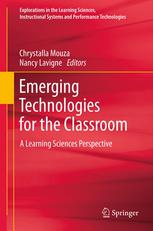

Most ebook files are in PDF format, so you can easily read them using various software such as Foxit Reader or directly on the Google Chrome browser.
Some ebook files are released by publishers in other formats such as .awz, .mobi, .epub, .fb2, etc. You may need to install specific software to read these formats on mobile/PC, such as Calibre.
Please read the tutorial at this link: https://ebookbell.com/faq
We offer FREE conversion to the popular formats you request; however, this may take some time. Therefore, right after payment, please email us, and we will try to provide the service as quickly as possible.
For some exceptional file formats or broken links (if any), please refrain from opening any disputes. Instead, email us first, and we will try to assist within a maximum of 6 hours.
EbookBell Team

4.3
78 reviewsThis book provides contemporary examples of the ways in which educators can use digital technologies to create effective learning environments that support improved learning and instruction. These examples are guided by multiple conceptual and methodological traditions evolving from the learning sciences and instructional technology communities as well as other communities doing important work on learning technologies. In particular, the book provides examples of technology innovations and the ways in which educators can use them to foster deep understanding, collaboration, creativity, invention, and reflection. Additional examples demonstrate the ways in which emerging mobile and networked technologies can help extend student learning beyond the confines of the classroom wall and support student-directed learning and new media literacies.